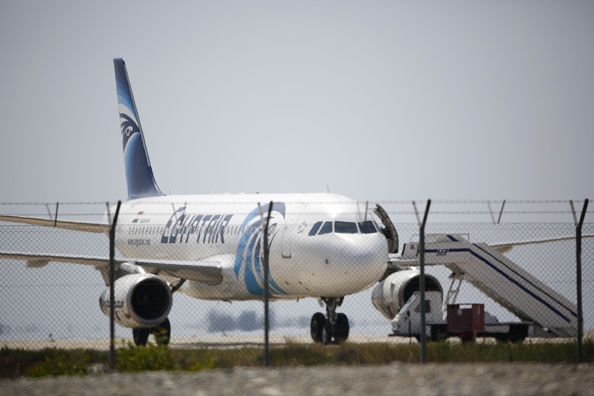
The dramatic incident that unfolded in Cyprus on Tuesday, as a hijacker was arrested after diverting a flight bound for Cairo, was a blast from the past of unsafe air travel. Hearing that it had landed safely and that the passengers escaped likely inspired a sense of déjà vu among anyone who traveled by plane in the 1970s. Though that type of hijacking is no longer a widespread fear among air travelers, they were once shockingly common.
Several TIME covers examined the problem during the 1970s and 1980s. Many of the hijackings that took place during this time involved a “troubled soul” with a personal reason for the destination change, TIME reported in 1985, but other hijackings were the work of fundamentalist terror groups.
TIME detailed the problem in 1970:
Skyjackers are the greatest threat to travel since bandits roamed the Old West. With astonishing impunity, the pirates of the skies are able to take over the swift vehicles that represent the most advanced developments of modern technological civilization. Less and less often are the culprits misfits and former mental patients seeking psychic as well as physical escape. Increasingly, they are dedicated, vicious political fanatics, who have discovered that one of the most vulnerable points of the developed world is a jetliner at an altitude of 30,000 ft.
During a 1970 hijacking, for example, extremists associated with the Popular Front for the Liberation of Palestine—”sky pirates responsible for one of the most audacious acts of political blackmail,” as TIME phrased it—hijacked three planes, landed them in the Jordanian desert and blew them up after freeing about 300 passengers whom they had held hostage as part of a political bargain.
At least one hijacking incident was made newly relevant by the United States’ recent easing of relations with Cuba, NPR reported this month. A U.S. congressman from California is now pushing for Cuba to extradite a man who was one of three hijackers who diverted a plane—on which the congressman was a passenger—to Cuba in 1971. The men were on the run, suspected of shooting a police officer.
Sometimes, however, the reasons for the hijacking were a little more inscrutable: In another instance, a Cuban exile diverted a flight to the island for a taste of his mother’s frijoles, Brendan Koerner reported in his book, The Skies Belong to Us: Love and Terror in the Golden Age of Hijacking.
Get your history fix in one place: sign up for the weekly TIME History newsletter
Between 1968 and 1972, there were about 130 hijackings of U.S. commercial jets, “often at a pace of one or more per week,” according to Koerner. When skyjacking was first becoming a problem, in 1968, a Senate hearing had addressed the issue and debated potential solutions. Though some proposed metal detectors and X-ray machines as part of a pre-flight screening, others anticipated the complaints such a move would bring among passengers concerned about their privacy, Koerner reported in his book and in an article for Wired, and the idea was not implemented at that time.
But an anti-hijacking task force did begin to study the behavior of previous hijackers, and airlines later voluntarily implemented a system of screening passengers who fit that behavioral profile. Warning signs included an unconventional method of ticket payment, poor eye contact and lack of knowledge about their luggage. As airport security increased over the years—including the addition of those once-controversial X-ray machines—the holes that had been exploited by hijackers began to shrink. After the attacks of Sept. 11, 2001, made the threat of hijacking far more frightening, security was heightened again.
Hijackings dwindled as a result—but, as the world was reminded Tuesday morning, they have not yet been fully consigned to the history books.
More Must-Reads from TIME
- Why Trump’s Message Worked on Latino Men
- What Trump’s Win Could Mean for Housing
- The 100 Must-Read Books of 2024
- Sleep Doctors Share the 1 Tip That’s Changed Their Lives
- Column: Let’s Bring Back Romance
- What It’s Like to Have Long COVID As a Kid
- FX’s Say Nothing Is the Must-Watch Political Thriller of 2024
- Merle Bombardieri Is Helping People Make the Baby Decision
Write to Katie Reilly at Katie.Reilly@time.com